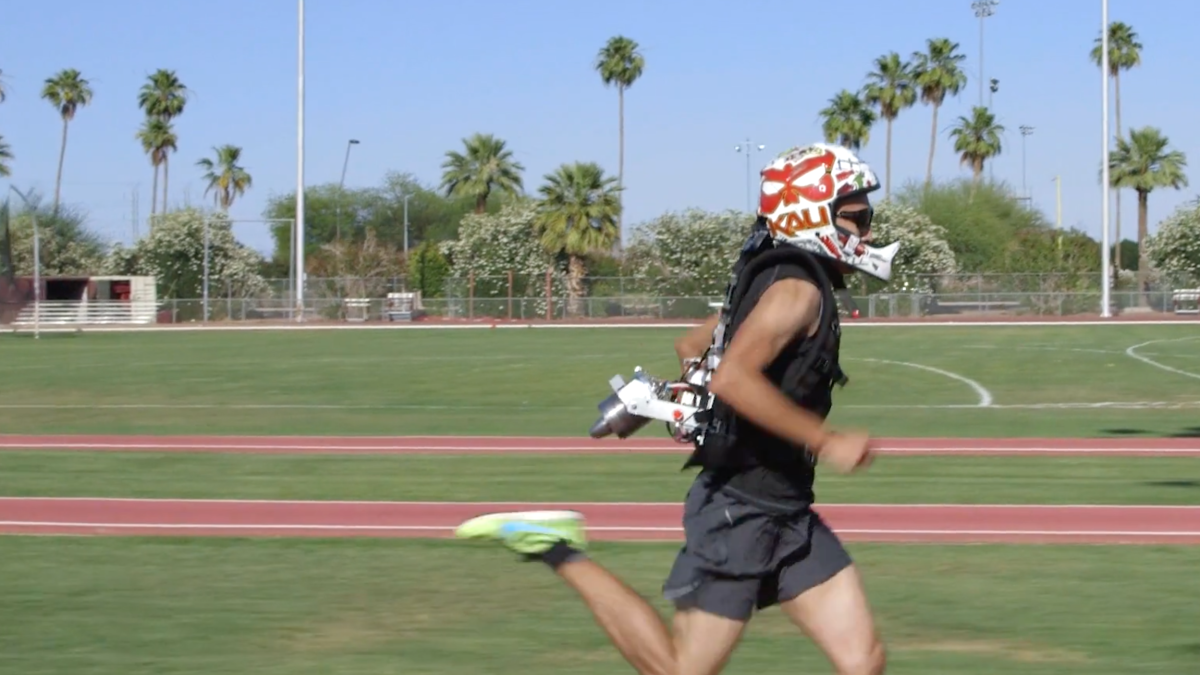A jet pack designed by an Arizona State University engineer with “a touch of Wile E. Coyote in him,” according to Sports Illustrated, has been updated to be lighter and better suited for use in extreme sports.
Jason Kerestes, robotics engineer with The Boeing Company, says he was able to “eliminate quite a bit of the weight that was on the original version” by getting rid of the aluminum and plastic framing.
Wearing the new, waist-mounted version, a bicycle rider on a test run was able to increase the top speed from 39 mph to 53 mph, and a rider on a long skateboard got up to 32 mph, Kerestes said.
The jet pack gained attention two years ago when a demonstration video circulated, featuring a runner on a track wearing a backpack-style prototype. Media outlets including Sports Illustrated and Gizmodo picked up the story, explaining the original goal of increasing the running speed of U.S. Army soldiers.
“The military gets the coolest toys first,” Gizmodo wrote.
“Lookout, Road Runner!” the Sports Illustrated headline touted.
Kerestes, who studied mechanical engineering as a master’s student at ASU, said that aside from making his jet pack smaller and framing it with carbon fiber, he’s been working on new technology with medical potential.
“I’m working on designing a new exoskeleton called REST-Exo, for robotic exoskeletal support technology, to help people that have trouble standing,” he said, mentioning people with knee or ankle injuries. He wants to be able to help them “get back up and walk.”
“Anything’s possible.”
More Science and technology

ASU and Deca Technologies selected to lead $100M SHIELD USA project to strengthen U.S. semiconductor packaging capabilities
The National Institute of Standards and Technology — part of the U.S. Department of Commerce — announced today that it plans to award as much as $100 million to Arizona State University and Deca…

From food crops to cancer clinics: Lessons in extermination resistance
Just as crop-devouring insects evolve to resist pesticides, cancer cells can increase their lethality by developing resistance to treatment. In fact, most deaths from cancer are caused by the…

ASU professor wins NIH Director’s New Innovator Award for research linking gene function to brain structure
Life experiences alter us in many ways, including how we act and our mental and physical health. What we go through can even change how our genes work, how the instructions coded into our DNA are…
